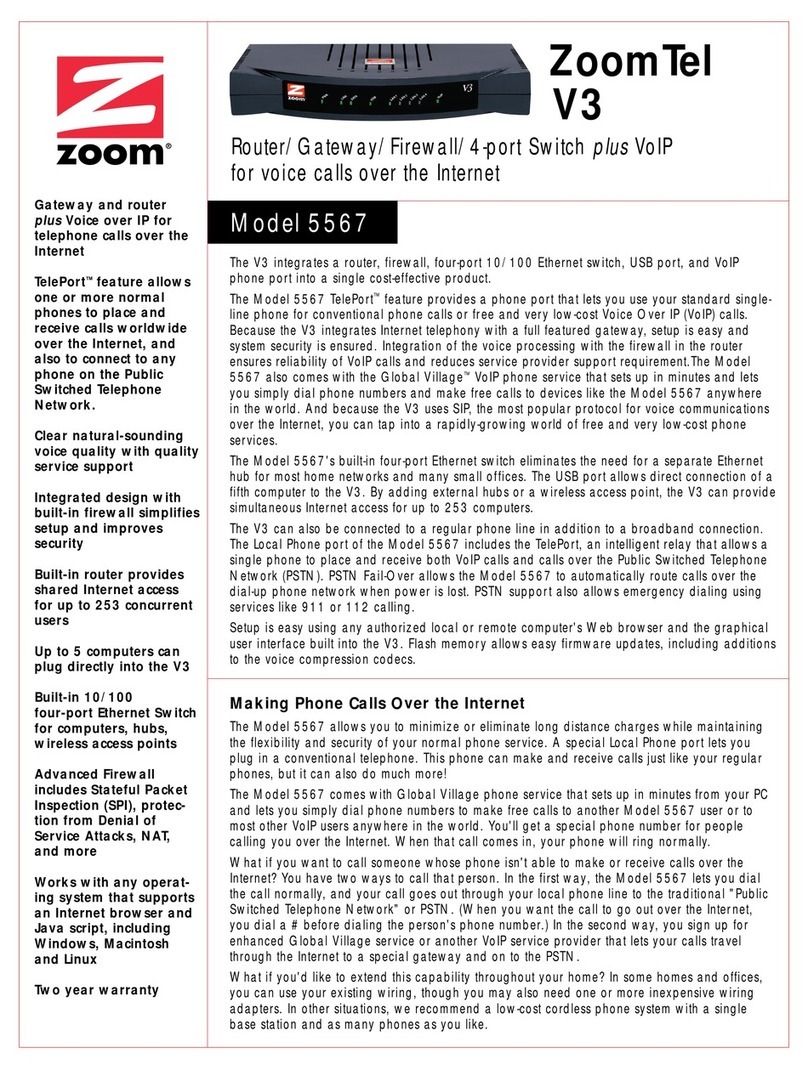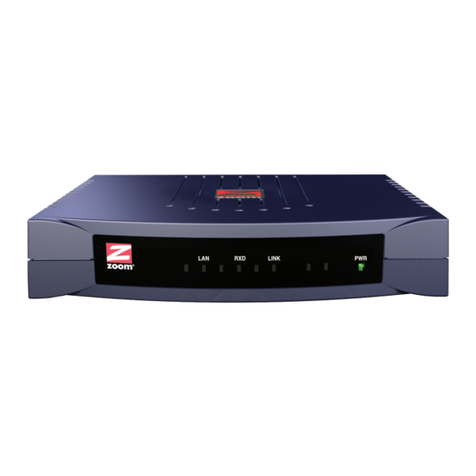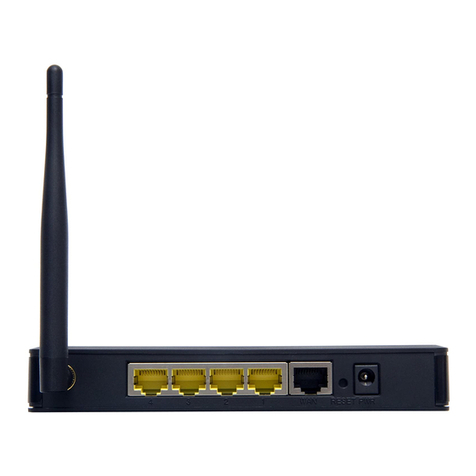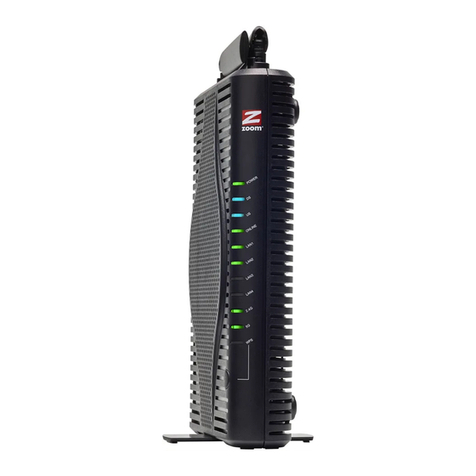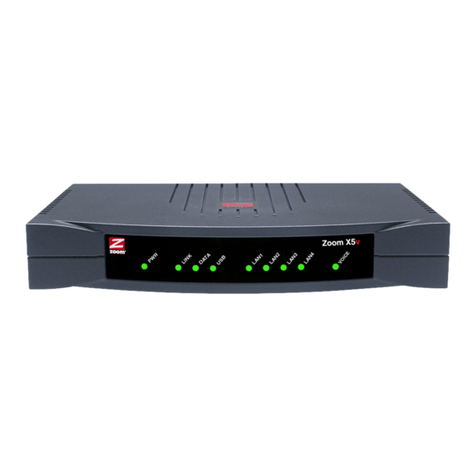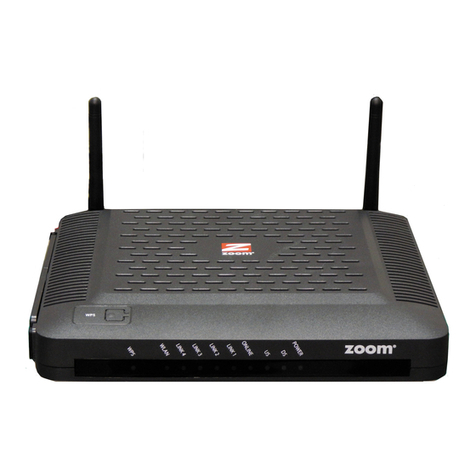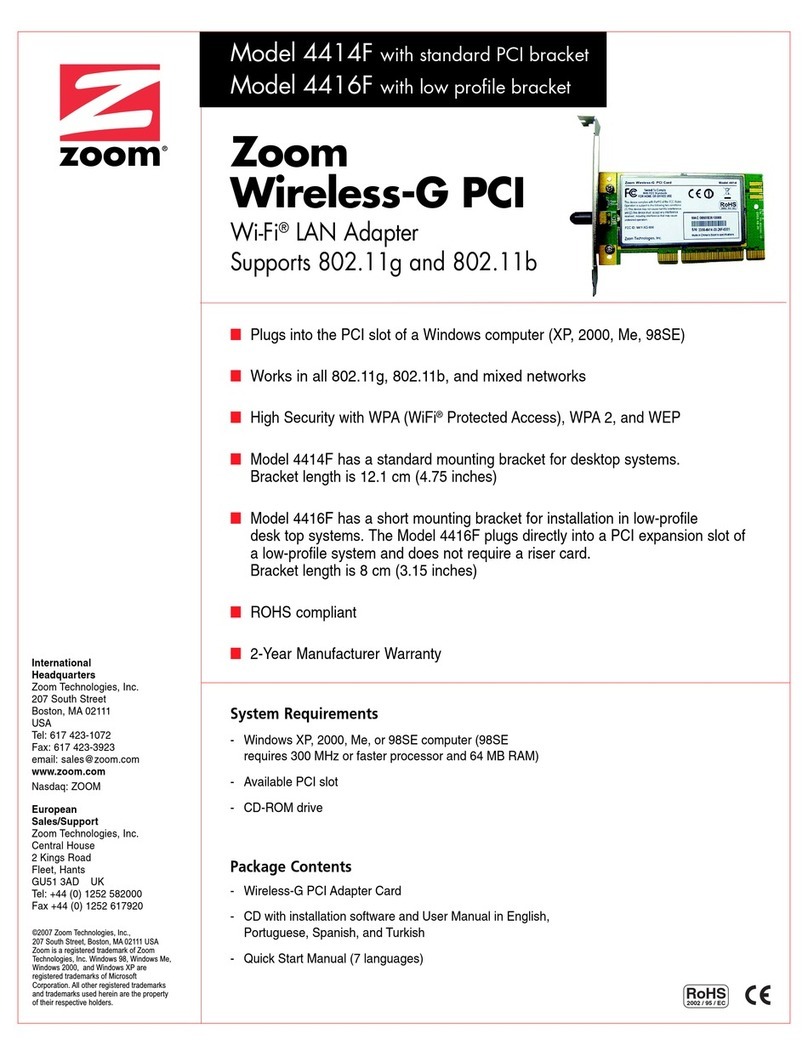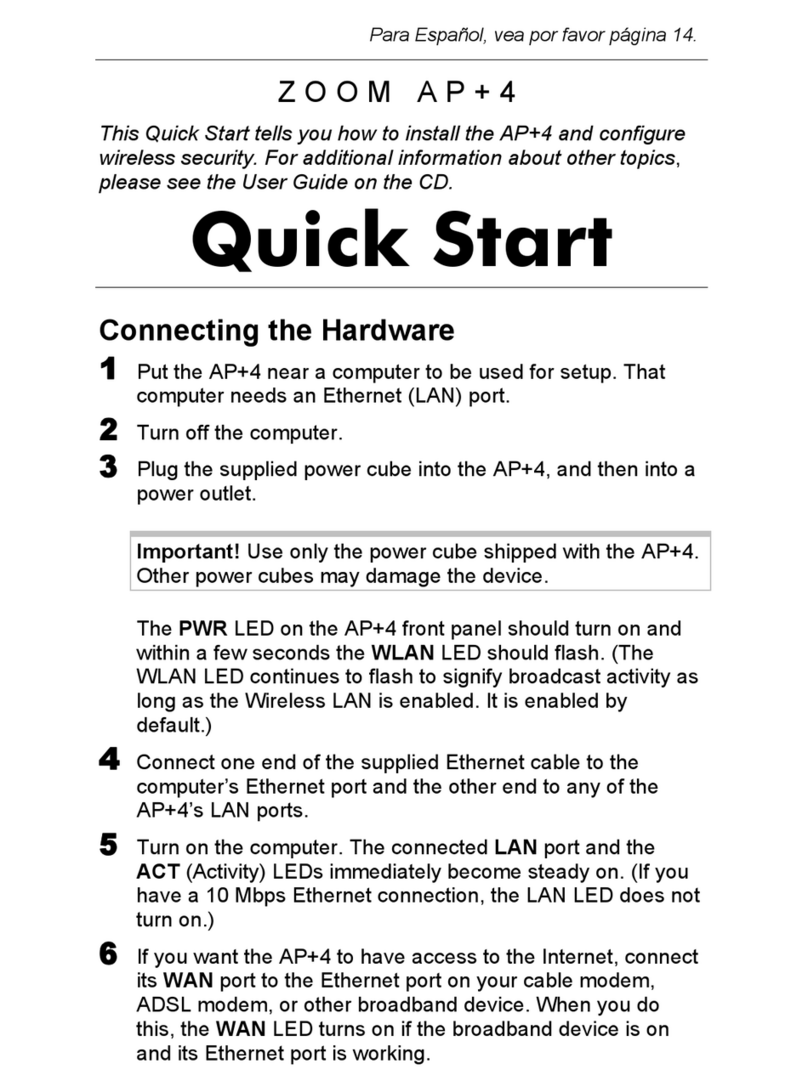Zoom V3 1612 User manual
Other Zoom Network Router manuals

Zoom
Zoom Gateway/Router V3 User manual

Zoom
Zoom 5524 User manual
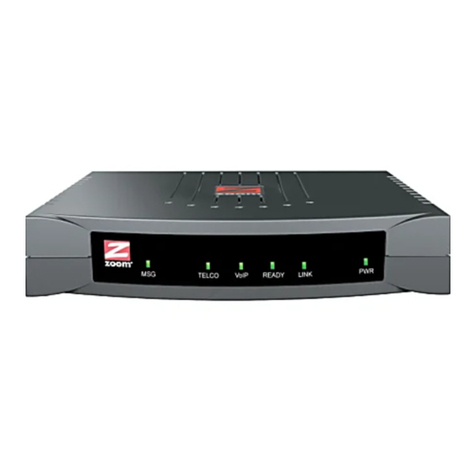
Zoom
Zoom 5803 User manual

Zoom
Zoom ZoomAir IG-4150 Installation and operating manual
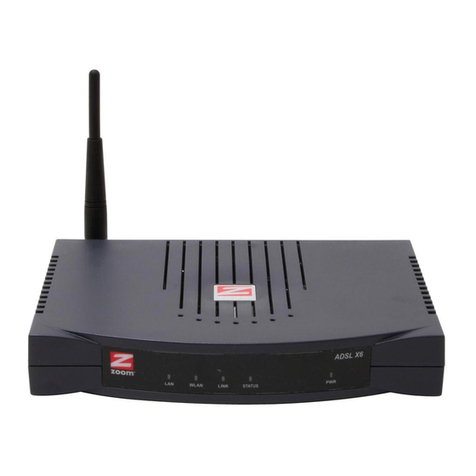
Zoom
Zoom Zoom ADSL X6 5590 User manual
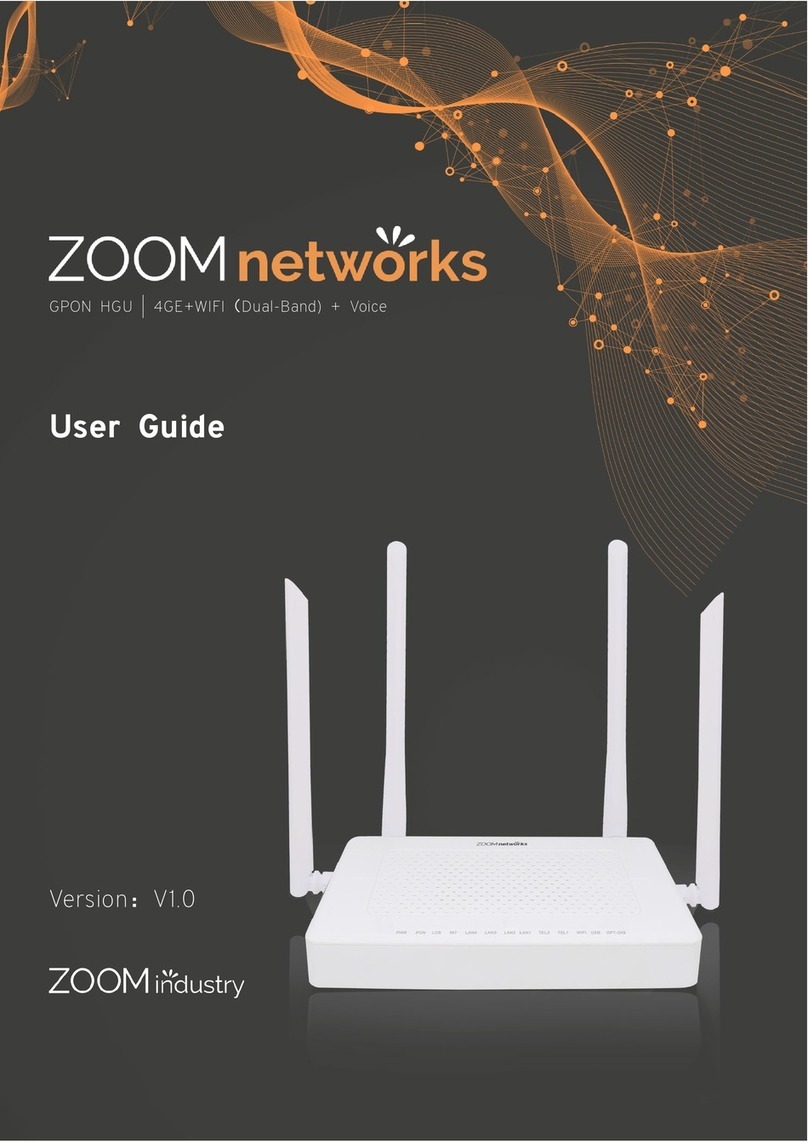
Zoom
Zoom Realtek Series User manual

Zoom
Zoom 5624 User manual
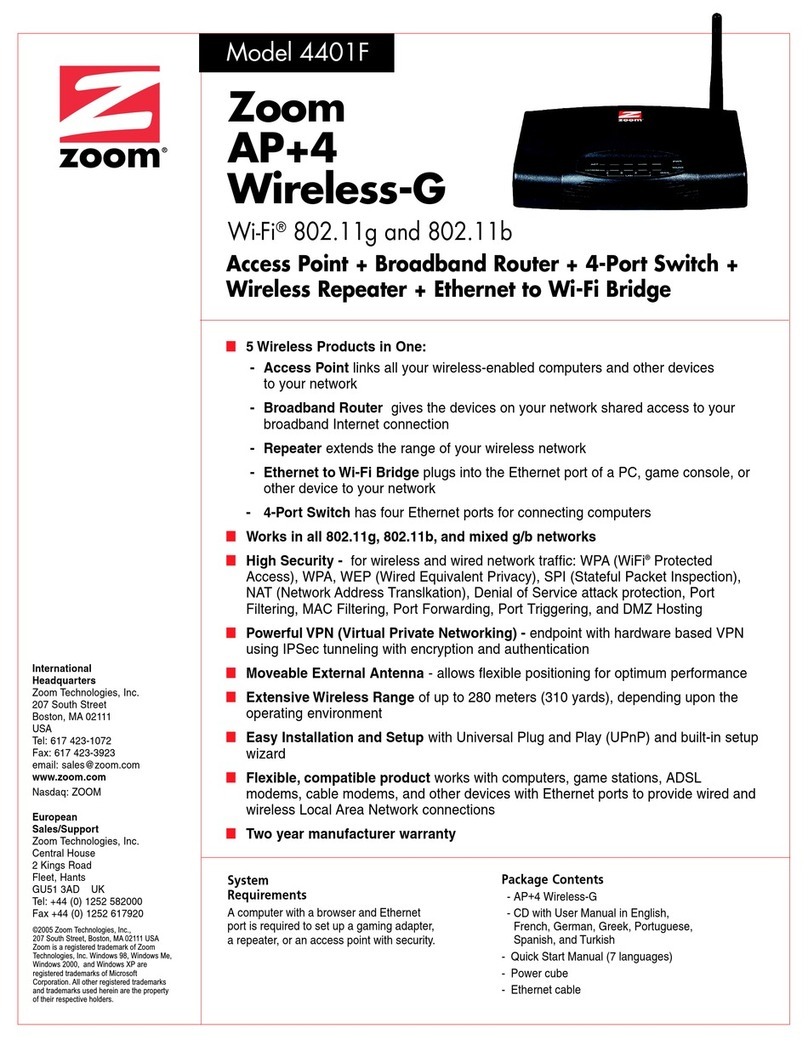
Zoom
Zoom 4401F User manual

Zoom
Zoom ADSL X5v 5565 User manual
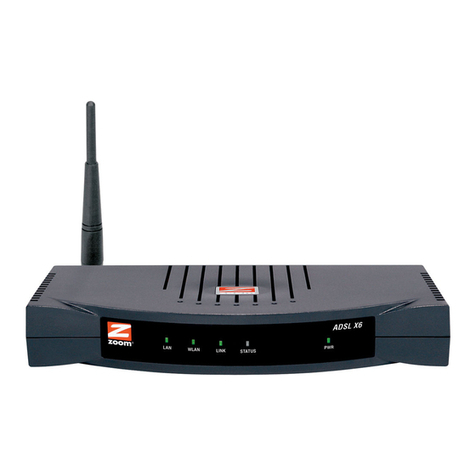
Zoom
Zoom ADSL X6 User manual
Popular Network Router manuals by other brands

TRENDnet
TRENDnet TEW-435BRM - 54MBPS 802.11G Adsl Firewall M Quick installation guide

Siemens
Siemens SIMOTICS CONNECT 400 manual

Alfa Network
Alfa Network ADS-R02 Specifications

Barracuda Networks
Barracuda Networks Link Balancer quick start guide

ZyXEL Communications
ZyXEL Communications ES-2024PWR Support notes

HPE
HPE FlexNetwork 5510 HI Series Openflow configuration guide

